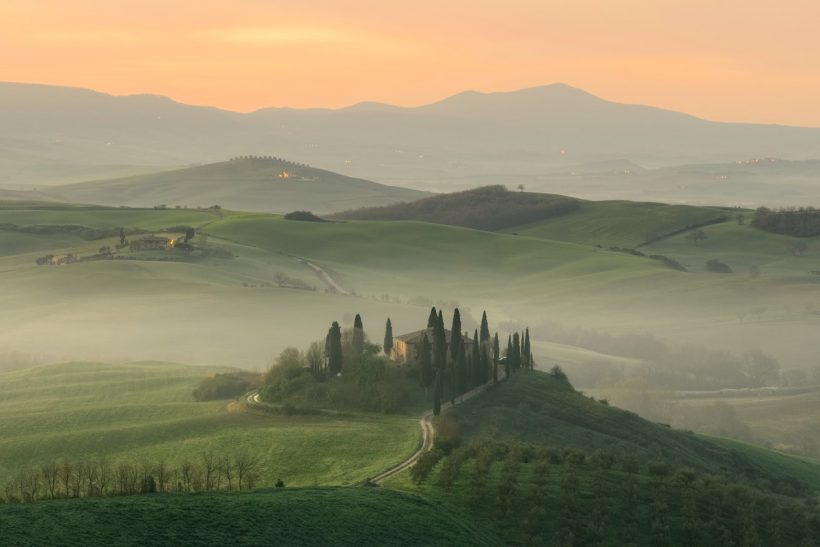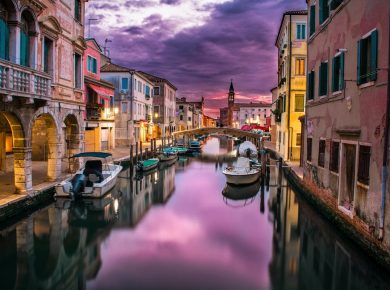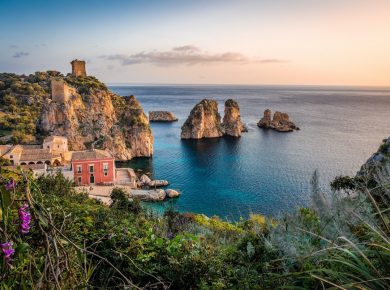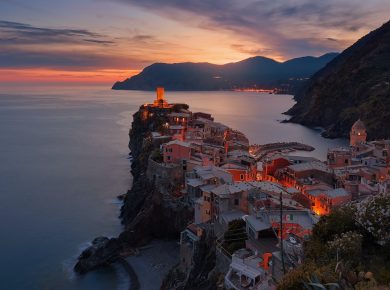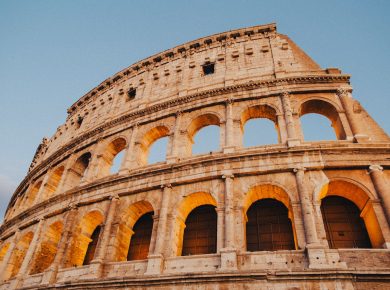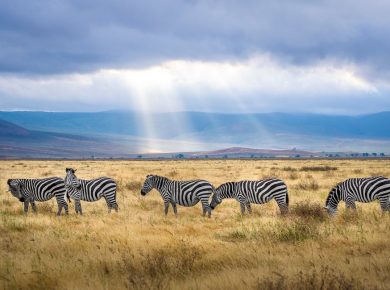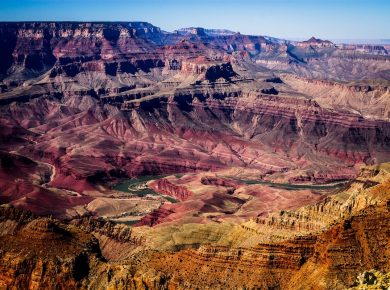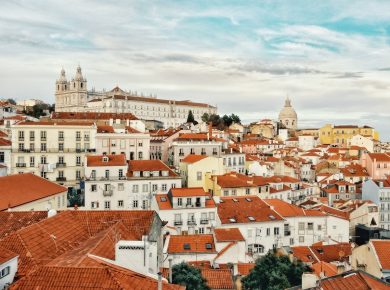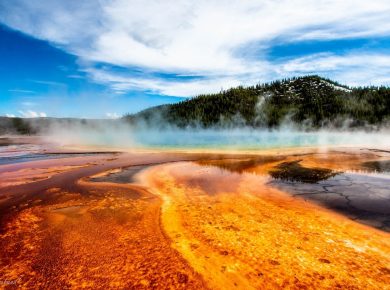What Is The Best Time To Visit Tuscany?
Italy’s Tuscany region, known locally as Toscana, is full of everything that makes Italy a world-class vacation destination. Home to breathtaking landscapes and unique cuisine not found in other regions, it also birthed several of Italy’s great artists, including Leonardo Davinci and Donatello. Their works, no doubt, were inspired by the beauty of their homeland.
Does Tuscany maintain its charm all year long? As the seasons pass, Tuscany experiences weather that can enhance or disrupt your holiday plans. When visiting a place famous for nature, it’s crucial to get there when it’s relatively dry and warm. The region is blessed with warm temperatures, but the heat may be too much in the summer months for some. Pick another time of year, and you may be warm enough with just a light sweater.
The best time to visit Tuscany is in early June if you want the most suitable weather, plus good chances of scoring a hotel deal.
Like most European destinations, the region gets its biggest crowds in the summer. Families bring their kids on summer vacation, and hotels fill up. This is another factor to consider when booking. If you don’t like to share the major attractions with big tour groups, you may be disappointed with your visit.
Traveling during this time, you will see a massive spike in hotel prices as the peak season goes in full swing. This article assesses the average weather and tourist season trends to determine the best month to visit Tuscany for good weather and low prices.
To find the best time to visit Tuscany, we will look at four cities spread throughout the coastal region: Florence and Pisa in the north, Grosseto in the south, and Arezzo in the east.
Table of Contents
Average Temperature In Tuscany
Italy enjoys warmer temperatures for more of the year than its neighbors, and Tuscany is no exception! The weather is shorts and t-shirt friendly for most of the year.
Tuscan summers are known for being hot, and they’ve grown hotter in recent years. The region gets its hottest temperatures in mid-July, with Florence taking the top spot for heat at 90°F in the daytime and 66°F at night. The rest aren’t far behind, with Grosseto and Arezzo neck-and-neck at 88°F daytime heat and Pisa peaking at 86°F. Grosseto cools down more on summer nights, dropping to the low 60s while the other three stay in the upper 60s.
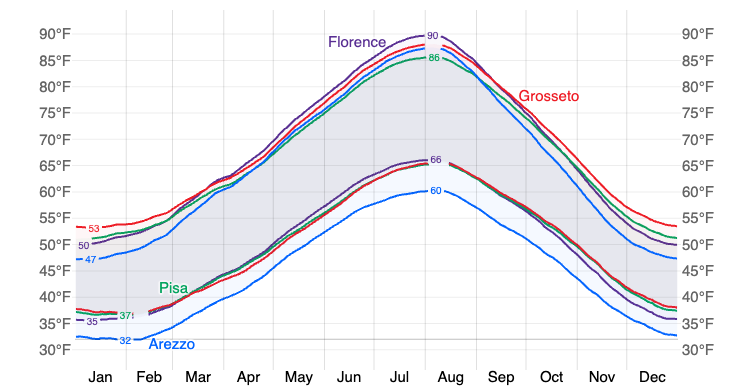
Winter temperatures are still warm enough to spend time outside during the day but require a warmer layer or two after dark. From December through January, Grosseto is the warmest at 53°F during the day and 37°F at night. Pisa and Florence are close behind, while Arezzo gets the coldest winters with a 47°F high and 32°F low in these months.
All four cities rise gradually and relatively uniformly in temperature from mid-February until summer. The pattern reverses in the fall as they all begin cooling off steadily from mid-August. Arezzo differs slightly as its fall temperatures are somewhat lower than the rest, and it cools off for winter faster.
Daily Chance Of Precipitation In Tuscany
Good news for rain haters- Tuscany doesn’t get much of it! The region receives a few days of precipitation monthly, but the numbers are low.
Visiting in summer will guarantee the driest Tuscan weather, with July getting the least wet days. Grosseto only gets 2.7 wet days this month and has the lowest annual amount of the four cities. The other three don’t vary much, with rain chances between 10 and 15% in the dry season (Grosseto is 8%).
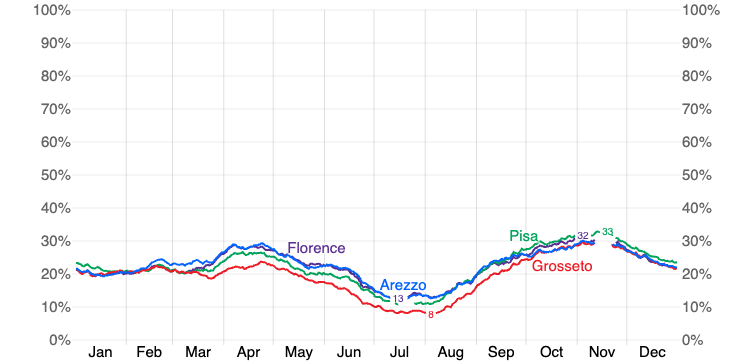
You’re most likely to get rained on in fall and mid-Spring, but don’t expect downpours. Between October and November, the chance of precipitation in all four cities grows just above 30%. In April and May, Florence, Pisa, and Arezzo have a 25% daily chance of rain, while Grosseto is slightly lower at 22%.
Winter is drier than the shoulder seasons but has a bigger precipitation threat than summer. From mid-December through February, the chance lies just above or below 20% in the four cities. This might come in the form of snow in Arezzo, where winter temperatures fall below freezing at night.
Humidity Comfort Levels In Tuscany
Humidity doesn’t linger in the Tuscan air all year long, but there is a humid season, and its severity varies drastically across the region.
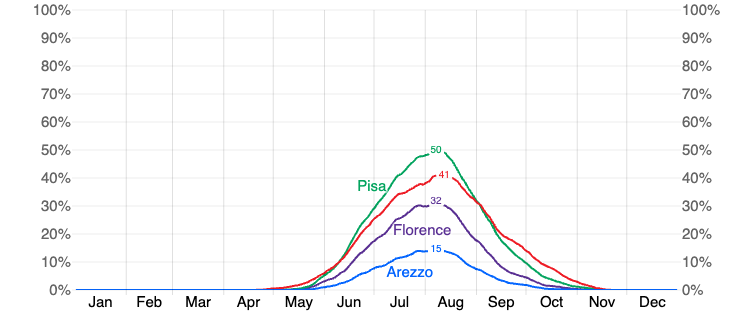
For all cities, the muggy season picks up in mid-May, and the worst has already tapered off by mid-September. Mid-July is the worst time to visit if humid weather is a deal-breaker for you, especially in Pisa, where there’s a 50% chance that the weather conditions are “brutal” or “oppressive.” Grosseto is the second worst at 41%, and then Florence at 32%.
Arezzo, by comparison, doesn’t have brutally muggy summer days, peaking at only a 15% chance of humidity at this time. If humid weather is problematic for you, Tuscany isn’t necessarily off-limits in the summer.
Best Time To Visit Tuscany For Great Weather
Italy’s Tuscany region, like much of Italy, is blessed with lovely weather no matter the season. However, when is the best time to go to enjoy the atmosphere and natural beauty that makes it one of the world’s most celebrated, romanticized regions? There are several factors to keep in mind.
Though summer is low in the precipitation department, its boiling temperatures and humidity are bound to scare away prospective tourists. Imagine standing in line or sitting in an outdoor café, and it’s over 90°F. If you don’t think you’ll last long, the summer may not be for you.
Winter isn’t nearly as hot, and it’s also quite dry. However, the flora and fauna that draws people to the region won’t be around for you to see. Though plenty of other attractions in the area make for an unforgettable time, Tuscany’s vibrant countryside is unmatched.
Though a bit wetter on average, spring and autumn bring pleasant temperatures and stunning views. Spring sees Tuscany at its most lush, making it the ideal time to visit if nature is your priority. For a different setting, September and October have similar weather to the spring but panoramic views of crisp fall foliage.
The best weather in Tuscany depends on what suits you best. If staying dry and warm is your priority, you have many options! If the views of nature on offer are more important, going in the spring or autumn is your best bet.
Best Time To Visit Tuscany For Low Prices
Tuscany isn’t exactly a budget vacation hub, but there are ways to save if you book for the right time of year. Finding a cheap, time-efficient flight may be arduous, depending on what time of year you plan to visit.
Firstly, if you’re coming from another European city, check for connections with budget carriers like Wizzair or Ryanair. Several towns have routes to Florence or Pisa, making them an easy addition to a summer backpacking trip across Europe. Prices vary, but you can usually secure a rate when booking at least one month prior to flying.
Generally, if flying from overseas, direct options to Tuscany are limited. Delta Airlines, which operates flights straight to the region, only does it in the summer. Rome isn’t far from the area and takes in tons of long-haul connections. Carriers like Delta, American, and United regularly travel to the capital and other Italian cities. Alitalia, Italy’s national carrier, also connects from a few US cities, but their network is small.
Compare airfare to Milan, too. Just slightly further from Tuscany than Rome, it’s also a central hub where you can find flight deals. Flight and train connections from there to Tuscany are a breeze. February is said to be the cheapest month to fly to Italy from the USA.
Accommodation prices and availability also fluctuate significantly throughout the year. Expect high prices and competition during peak season. Aside from that, prices are much lower in the shoulder and off-season.
Peak Travel Season In Tuscany
Summer’s peak season sees over 39 million tourists in Italy, with many of their itineraries including a stint in Tuscany. Every city, town, and villa will be packed with tourists. It’ll be crowded, pricey, and hot.
The peak season in Tuscany is also the peak of summer’s heat and humidity. In most of the region, the daytime temperatures reach boiling highs, and the air is thick and muggy. That, combined with loud crowds, may not provide the peaceful, idyllic atmosphere most expect when visiting.
The presence of air conditioning is another thing to be wary of when booking in the summer. As the summers grow hotter every year, more Italian homes are getting air conditioners. Look for AC in the description of the places you book to be sure.
While discounts and deals are scarce in the summer, Tuscany’s tourist infrastructure is at its most operational. More direct connections by train, bus, and plane are available than in other seasons, so for a short time, all roads lead to Florence instead of Rome. Walking tours and tour packages are also available in higher quantities in the summer. If you’d rather sit back and let an organizer do the planning for you, peak season is the best time to do that.
Shoulder Travel Season In Tuscany
A trip to Tuscany in its shoulder season is sure to delight. Crowds are smaller, the weather is fair, and deals are waiting for you!
Smaller crowds are a massive plus for booking in the shoulder season. Several regional museums and sites will have little to no wait to get in. Famous Italian restaurants usually reserved for the whole summer might be available for walk-ins. You’re more likely to have a nice dinner sampling Tuscan cuisine and wines without a line of guests staring longingly at your food.
The weather is a bit rainy in the early spring and autumn when the shoulder season takes place, but that’s all relative. Though higher than in summer or winter, the chance is still relatively low, and you’ll be ok carrying a rain jacket or umbrella in case of the occasional shower.
Remember that early June still falls under the shoulder season’s domain. Temperatures, precipitation, and humidity strike an excellent balance that is good for walking around outside in the daytime. If coming in this short window, you’re likely to beat the vast crowds that develop towards the end of the month and, as a result, pay less than them!
Low Travel Season In Tuscany
A Tuscan trip in the winter, though perhaps lacking some of the natural beauty other seasons boast, is sure to be a peaceful, intimate getaway due to the absence of huge crowds. You’ll also pay less than in any other part of the year.
Winters in the region are forgiving, with the temperature rarely dropping below freezing except in Arezzo. You’ll only need a light sweater on your afternoon walk around Florence.
The greenery that makes Tuscany so picturesque shrivels up with the winter, but its natural beauty doesn’t just take the season off. Mountains, hills, and lakes don’t disappear! Take advantage of little-known ski resorts like Abetone, not too far from Florence. Doing so will give you an experience no summer tourist will get.
Flying in winter will secure you the lowest airfare rates. February, the cheapest month to fly to Italy, is full of deals. Accommodation rates will be at their lowest, too. Hotels struggle to fill their rooms at the same capacity as summer, so slashed prices are easy to find.
Best Months For Travel To Tuscany
There’s truly no wrong time of year to visit Tuscany. The region’s fair weather and incredible views make it a perfect destination for any season. However, consider staying in early June if you want the best possible weather, plus good chances of scoring a hotel deal.
Many advise going in April or May for the best weather and price combination. Though they’re also fantastic choices, June is warmer, drier, and has more daylight to fill each day with more activities. Moreover, a visit in early June takes you to the region just before it fills up with the peak season masses.
Since you’d be visiting in the calm just before the storm, hotels and villas should have wide availability and even deals. The weather isn’t as extreme as in the latter half of the month or in July and August. A visit in early June will allow you to soak in the sun without the need to take breaks and avoid the heat.
